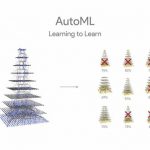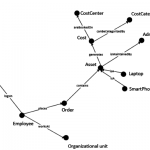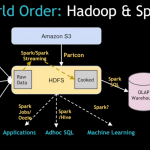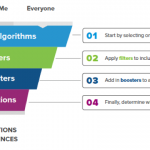How Machine Learning Scales One-to-One Personalization
Katie Sweet — November 4, 2017

The world of marketing is no stranger to buzzwords. While many marketing buzzwords words start off as real strategies or tactics that can improve a company’s marketing efforts, their meanings often become diluted the more they are used. Over the years, we’ve seen words like “sales enablement,” “social media,” “account-based marketing,” and even “personalization” become buzzwords that marketers can throw around without actually incorporating them deeply into their marketing strategies.
“Machine learning” is on its way to becoming one of those buzzwords too. Marketers are talking about it a lot and working out the best way to implement it in their marketing strategies, but many are not truly using it in a way that has a real impact on their business.
Machine learning isn’t just something for marketers to pay lip service to, however. It has enormous potential for generating benefits to organizations in many ways and is already paying dividends for those who’ve begun applying it effectively. With that in mind, Karl Wirth (co-founder and CEO of Evergage), recently presented a Digital Summit webinar entitled Personalization in the Age of Machine Learning. His goal was to demystify machine learning and help marketers understand how it can be used to truly individualize the customer experience — rather than relegate it to a minor website marketing tactic. In this blog post, I’ll outline how machine learning can improve three main components of personalization: understanding, engaging and learning. But while this blog post is a good start to demystifying machine learning, you will definitely want to check out the full webinar replay for more detail.
Understanding
Before you can personalize an experience to an individual, you have to understand that person. Who is she? Where is she from? What are her likes and dislikes? What is she interested in at this moment? This means that you need to a collect a large amount of deep data: not just attributes and clicks, but engagement and contextual data as well. You need a central place to store all of this data and combine it with any other customer data sources you have (such as a CRM, ESP, data warehouse, etc.). Then, of course, you need the ability to act on all of this data in real time — because the data does not do you any good if you can’t do anything with it.
Machine learning helps you to synthesize all of that customer data at scale. Machines can make sense of what the data actually means, drawing conclusions about each individual person — such as identifying a person’s persona, interests, attributes, intent, or stage in the journey. For example, machines can make sense of a shopper’s haphazard browsing behavior through a home improvement site to uncover that she is likely looking to remodel her kitchen. Without that insight, the retailer may deduce that she is simply looking for microwaves because she viewed slightly more microwave product pages than pages in other categories. Understanding her deeper purpose on the site can lead to far more meaningful and successful personalized experiences, as we’ll see in the next section.
Engaging
After you understand who a person is and what she is looking for, you have to effectively engage her. You need to decide what to say to her, where and when to say it, and then actually deliver the message in the form of a tailored, relevant experience. Without machine learning, the most common way to provide a personalized experience is through rules. Rules are certainly effective, but they require manual intervention from the marketer and are primarily used to target segments, rather than individual people.
Machine learning helps you sift through all the different options you could display to her and select the best one. Whether it’s selecting the best products, categories, brands, promotions, etc. to recommend to her; reordering or changing the navigation to help her find what she’s looking for; sorting the search results to be relevant to her, etc., machine learning can make it possible.
So returning to the shopper on the home improvement site, the site can recognize that she is looking to remodel her kitchen and can then recommend the appropriate content around remodeling for her, as well as products, categories and brands that meet her preferences. This can be done by building your own custom algorithm or “recipe,” combining all the elements of machine-learning personalization.
Learning
The last critical component of personalization is learning. After you understand and engage a person, you need to assess whether your customer experience was helpful and identify how you could do better. To accomplish that, you probably use A/B testing. Statistically comparing a personalized experience against a control can show you if the campaign delivered a lift in engagement, conversion rate, and more. This is immensely valuable information and should be analyzed for every personalization campaign you run.
But machine learning can take learning a step further than A/B testing to help you make sense of the complexities of the real world. It can help you compare how a campaign is performing against its past performance, and the goals you outlined for it, as well as your other campaigns. Machines can predict what the expected range of performance should be and alert you when it is not performing as anticipated — and even show you areas to improve (such as when a campaign is underperforming for specific segments). Essentially, machine learning can take a wealth of data and synthesize it to draw your attention to potential opportunities or problem areas.
Final Thoughts
Don’t let “machine learning” become another buzzword that loses its meaning and value. Instead, use it to power your customer experience and speak to each person at the one-to-one level.
Business & Finance Articles on Business 2 Community
Author: Katie Sweet
Katie Sweet is the content manager at Evergage, the Real-Time Personalization Platform. With a background in product and content marketing, she spends her days planning, writing, editing, launching, and generally thinking about content. She loves everything about digital consumer behavior and is always interested in learning more about how consumers spend… View full profile ›
(47)













